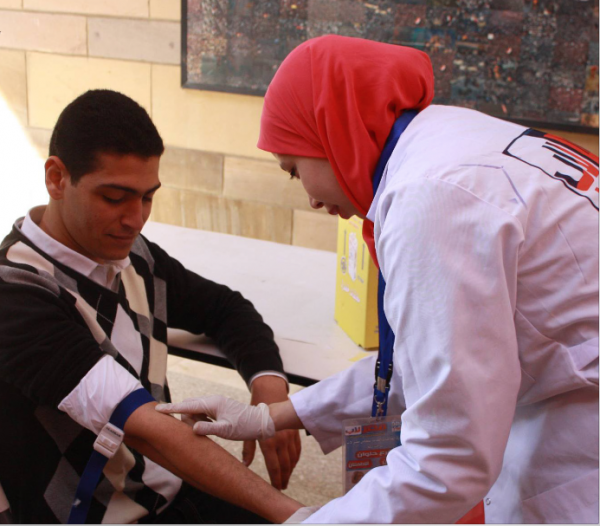Locked in the ‘Bullying’ Room
In the world of sports, players and athletes spend a lot of their time in locker rooms, where 30 percent of bullying occurs, says the American governmental entity ‘Stop Bullying’.
Bullying is easy to conceal because it is typically mistaken with horseplay – teasing, wet towel fights and name calling in a joking manner especially among athletes.
But when horseplay gets aggressive or insulting, then the blurred line between horseplay and bullying is crossed.
The locker room is often a haven for gossip, naming, shaming, and mockery of the way the athletes play or even dress.
Leila Amr, 20, was one victim of locker room gossip during her time on a basketball team.
“When I was 15 years old, I used to hang out with my older brother’s friends on the men’s basketball team. But then I started to hear what was being said behind my back.”
“The girls on my team were always talking about me in a very bad way. They would say things behind my back about the ‘many’ guys I used to sit with. A rumor like that breaks any girl in that age,” she added.
Coaches usually know that bullying occurs in locker rooms, but they tend to perceive it as horseplay rather than bullying.
Although humor is a common characteristic in relationships between players in a locker room, it can sometimes get offensive by exposing weaknesses and making fun of ethnicity and sexual orientation.
Coach of the Heliopolis Club Handball team, Abdelhamied Mohahmed told The Caravan, “players tease each other all the time in locker rooms, it’s completely normal. Coaches only intervene when it gets physical.”
Captain of AUC’s soccer team, MD, said that bullying within sports teams is mostly directed towards the newest member of the team, an orientation for the ‘newbie’ known as hazing.
“Teasing happens all the time, but I had to stop a fight once between two players because it became personal. These matters can cause huge fights when it comes to a group of friends teasing one person, which is usually the ‘new guy’,” MD added.
Other athletes explained that bullying has become a norm in their team dynamics.
“I used to get bullied in locker rooms by older team members. It was normal to be bullied when you were young by older members, and to bully those who were younger, “ admitted 21-year-old AA who used to play in a soccer team when he was younger.
When he was around 13-years old, AA was good enough to join the older team, of the 16-17 age range.
“I was extremely happy. I thought that would stop the bullying, but I was wrong,” AA said.
He explained that his team members would treat him well in front of the coach, but things would change as soon as they enter the locker room.
“Once, they surrounded me in a circle, they didn’t beat me up, but they kept telling me that I’ll never be one of the team, and the longer I stay, the worse the locker rooms are going to get for me. Fear was my companion for the time I spent in the team,” AA added.
Bullying in locker rooms is not exclusive to team members, however. Some athletes say coaches sometimes threaten athletes with physical violence in a mistaken bid to motivate players.
“We played the first half of the match in a very bad form, so the coach said something I’ll never forget, he told us ‘whoever misses a shot in the next half, I will take him to the locker room and break his bones,” said AW, a 21-year-old handball player.
AW has been part of the handball team for 10 years. He said aggression and profanity in the locker rooms were norms.
“I had a teammate who was bullied and took a ball in the eyes in the locker room, and had to go into surgery.” said AW.
“Locker rooms are more dangerous than you think.”




